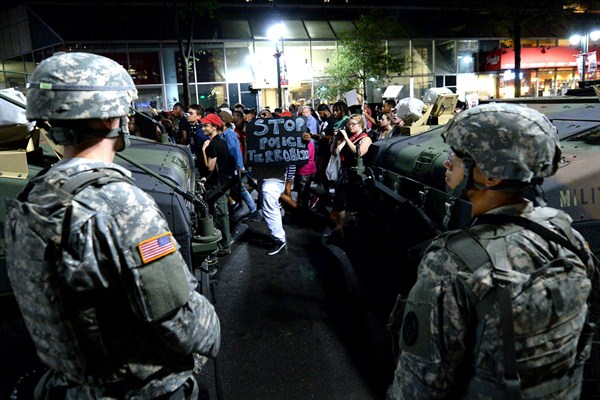A routine intervention by security forces turns deadly, causing deeply rooted and widely felt grievances that have lain dormant for years and even decades to erupt into view. Spontaneous protests grow into organized demonstrations, ending in violent confrontations, and at times even riots.
By now we’ve become familiar with the sequence of catalyzing events that trigger widespread political instability. It is a pattern that describes Tunisia, Egypt and Syria in 2011, and we are used to thinking of it in terms of fragile states on the periphery.
But it also describes the events in Charlotte, North Carolina, last week, following what many perceived as the latest in a series of unjustified police killings of black Americans that have brought thousands to the streets across U.S. cities over the past few years. It was the same scenario that led to the 2005 riots in France’s banlieues, where the country’s immigrant and immigrant-origin population is concentrated.

